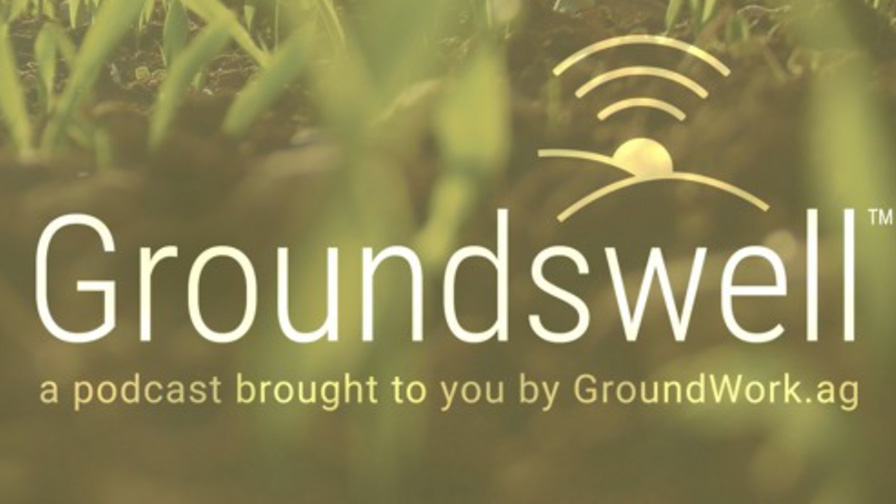Drought Planning
Drought. We know how it’s affected the crops, and we’re beginning to see how it’s affecting supplies and prices. But how will it impact our nutrient management for the next crop? Here are some issues to consider.
Residual Soil Nitrate
Soil nitrate can be higher after a drought. Decreased downward movement of soil water and reduced nitrogen (N) uptake by stressed plants are key causes. Whether or not residual N will be available for next season’s crop depends greatly upon the precipitation that occurs after the harvest of the present one. For instance, research in Minnesota has shown that precipitation occurring in early spring to early summer is associated with higher losses of nitrate in tile drainage.
Pulses of nitrogen can also occur any time dry soils are rewetted. As soils dry, organic matter releases N (mineralizes) more slowly, approaching zero under very dry conditions. In addition, some soil microbes are killed. When dry soils are rewetted, a sudden pulse of inorganic N may occur, termed a “flush” or a “hot moment.” This pulse can last for days to weeks. A significant portion of this flush is thought to come from the decomposition of the microbes recently killed during the dry spell. Another contributor to the flush is the release of organic compounds from the reactive sites at clay mineral surfaces.
Because the fate of unused N is so uncertain and relies so heavily on environmental conditions, it is advisable to incorporate soil N tests as part of the decision-making process for the next crop. Soil N tests are the best early-season diagnostic tool for assessing the quantity of residual soil N that could potentially be available. States vary considerably in their suggestions for use of soil N tests, so consulting local guidance is required.
A strategy that can help keep N from leaving the rooting zone is planting cover crops. Local expertise is needed to manage these successfully, because there are many considerations beyond just nitrate recovery.
Among these are choice of cultivar, soil moisture depletion, pathogen carryover, and how well the release of N from the cover crop is synchronized with the following crop’s nutritional needs. Cover crops have been shown to scavenge significant amounts of residual soil nitrate, reducing how much leaches into tile lines; however, they must be managed properly to benefit the entire cropping system.
N Credits From Soybeans
The soybean N credit is a reduction in the N recommended for corn following soybean compared to corn following corn. While the exact causes of this reduction are still under investigation, several contributing factors have been identified.
The most commonly cited factor in the N credit is biological N fixation. In an Illinois study comparing nodulated to non-nodulated soybean isolines, soil N supplies were higher after nodulated soybeans than after non-nodulated soybeans. However, both types of soybeans produced higher N supplies than where corn was grown. Consequently, additional factors beyond just biological N fixation are important for determining the N credit.
Soybean also appears to produce a pool of readily mineralizable N in the soil. This pool is thought to come from the soybean roots and the organic compounds they release. Decomposing soybean residue therefore releases N quicker than corn residue — soon enough to be used by the succeeding corn crop, which reduces the amount of fertilizer N needed.
During a drought, N mineralization slows, and biological N fixation in soybean nodules lessens. Drought can reduce both the number of nodules on soybean roots as well as the quantity of N fixation in the nodules themselves. All of these changes can result in a decrease in soil N supply for the following corn crop. It is not clear just how much the N credit is affected. Sparse data indicate that the credit may range between half to the full rate normally used.
Nutrient Budgets
After harvest, nutrient budgets will need to be reassessed. Here are a few things to consider.
First, crops planted for grain were, in many areas, harvested for forage instead. Any time there is a change in how much of the plant gets harvested, there is a corresponding change in how much of each nutrient is removed from the field. For instance, about 20% of a corn plant’s above-ground potassium (K) is in the grain. If corn gets cut for silage instead, the entire quantity of K in the above-ground plant parts gets removed, rather than just the 20% that was originally planned for. If these changes go unrecognized, unwanted depletion of soil resources can occur.
Second, some growers who have planted cover crops to guard against soil erosion, reduce runoff and capture soil nitrate, are planning to harvest those cover crops because forage supplies are so short. Deciding to harvest, rather than leave, these crops increases nutrient removal beyond what was originally planned.
Third, tissue testing is a best practice this harvest season. Drought may or may not cause an increase in nutrient concentration, depending on which plant parts were harvested and analyzed, what crop was grown, and when the drought occurred. A classic example is high nitrates in drought-stressed corn cut for silage. Measuring nutrient contents in harvested crop portions takes the guesswork out of how the drought affected nutrient removal.
Soil Testing
No article on the drought would be complete without at least mentioning the need to test soils this season. In many areas of the Corn Belt, K tests will be particularly prone to some large variability from previous years’ tests, so it is good to be prepared for the possibility that some results may take some additional time to interpret.
Soil testing remains the best and most scientifically sound approach available for determining rates of nutrients needed.
Drought created a lot of unforeseen changes in nutrient cycles that could impact future management. Reassessments are critical. Measure the nutrients in the crops removed this year, whether it was grain or forage.
Compare that removal to what was planned and reexamine nutrient budgets. Measure what’s left in the soil to make informed adjustments to future applications of nutrients.
The cropping system connects source, rate, time and place decisions of 4R Nutrient Stewardship to nutrient performance. The cropping systems throughout much of the U.S. underwent a real shock in 2012 causing a need to reevaluate what “right” means for 2013.






